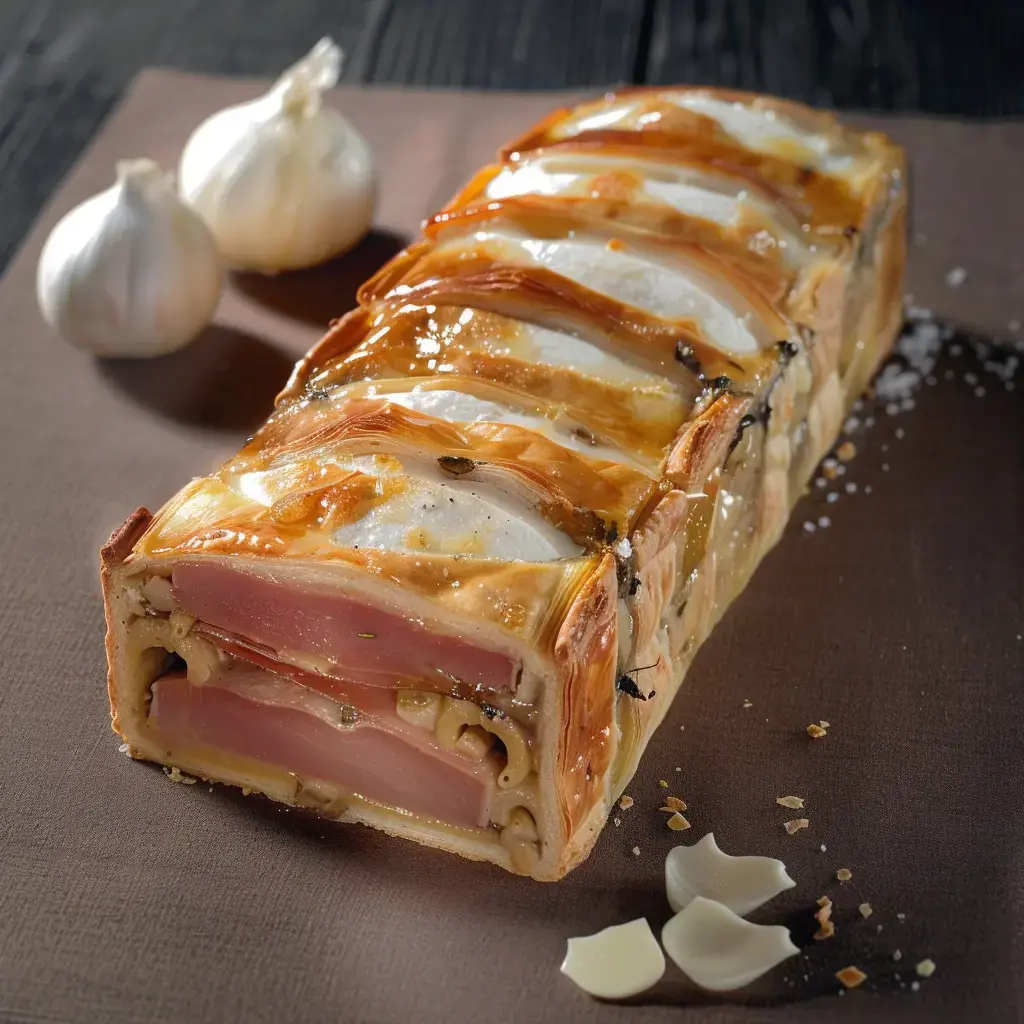 Pin it
Pin it
My family kitchen always saves a special spot for meat pastry. Everyone lights up when they see that golden crust at our holiday meals. I love how that crisp outer shell guards the tasty meat blend inside, with those silky foie gras bits and those little truffle chunks that bring some magic to it. Whenever I serve this dish, I can see that sparkle in my guests' eyes.
The wonder of meat pastry
If you asked me to pick my signature dish at my little restaurant, I'd tell you it's definitely the meat pastry. Customers just melt when they bite into that mix where the crunchy pastry meets the soft filling. Want to know what makes mine stand out? I always make it the night before when the kitchen's quiet and I can really focus on getting it just right.
My kitchen trick
- For the filling: I grab 1 kg of marbled pork shoulder, 800 g of juicy pork neck, 250 g of fatty bacon for richness, 4 shallots and 4 garlic cloves sautéed in 50 g of butter, a glass of dry white wine, 200 g of raw foie gras and 2 eggs to bind it all.
- The extra touches: 500 g of veal cushion, 2 thick slices of ham, 300 to 400 g of semi-cooked foie gras and a truffle that gives the whole pastry its aroma.
- My special pork marinade: For each kilo: 12 g of fine salt, 2 g of pepper, 2 g of four-spice mix, 3 g of pink salt, fresh thyme and bay leaf, 125 g of white wine, a splash of Madeira and Cognac.
- For the veal: Same seasoning base, but I add more white wine and Cognac.
- My homemade dough: 1 kg of type 55 flour, 500 g of good butter, 20 g of salt, ice-cold water and an egg.
- The jelly: I melt 50 g of gelatin in a mix of water and Madeira.
My step-by-step approach
- I start by
- Taking out and getting all my stuff ready. I cut my meats neatly, chop the pork, slice the veal into strips and slowly melt my shallots and garlic in butter.
- The marinade
- I mix my meats with all the spices and let them sit overnight in the fridge so the flavors can really sink in.
- The dough, a key moment
- Using a mixer, I blend my flour with butter, egg and cold water until I get a dough that holds together well. A short rest in the fridge is a must.
- The assembly, quite the craft
- I roll out my dough with care, I layer my filling, ham and foie gras like a fancy layered cake. I close it with dough, brush with egg and add some decorative touches.
- The baking
- My oven's heated to 170°C and I keep an eye on it for about 1h10. Then I let it cool down slowly.
- The final touch
- I pour my still-warm Madeira jelly into the holes and let it set in the fridge.
My little chef tips
In my kitchen, I won't ever skimp on meat quality, that's what makes or breaks it. I always take time to properly seal the edges of my dough, otherwise you'll get leaks everywhere! When I use truffle, I gently tuck it between layers like a hidden treasure. And most importantly, I let my pastry spend a night in the fridge - that's my trick for flavors that really pop in your mouth.
 Pin it
Pin it
Frequently Asked Questions
- → How long does meat loaf pie last?
- It keeps well in the fridge for up to 5 days if properly wrapped. The jelly plays a big role in preserving it. Don’t freeze it—it might ruin the texture.
- → Why should the meat be marinated?
- Marinating makes the meat tender and adds lots of flavor. Don’t skip this—it’s key to the taste. You’ll need at least 24 hours for good results.
- → What's the key to perfect jelly?
- Pour the jelly when it’s warm into the cooled pastry through the vents. Make sure the pie is fully chilled and pour slowly to avoid trapping air bubbles.
- → How to check if it’s properly cooked?
- Use a meat thermometer—it should read 65°C at the center. The crust should have a nice golden color, and the juices should be clear when released from the vents.
- → Is it better to prepare it in advance?
- Absolutely. Make it 2-3 days ahead so the flavors can develop. Keep it refrigerated until serving.
